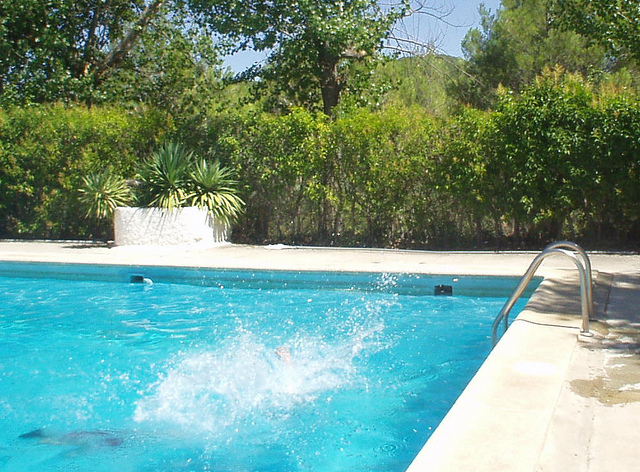The top two things to consider for pool maintenance must be health and safety. Health means the water is clean and crystal clear, and safety is everything else. To that end, here are four tasks that must be done to make sure the swimming pool is healthy and safe.
1. Make Sure the Water is Clean and its pH Balanced
No one wants to swim in a pool and no one should swim in a pool that’s turbid with algae and pathogens. Making sure the water is good to swim in involves pool chemicals that balance its pH and tools to simply clear out debris.
Ideally, a swimming pool’s pH should be a little bit alkaline, or between 7.2 and 7.6. This requires the alkalinity to be about a little approximately 100 parts per million and the calcium levels to be approximately 200 parts per million. Levels of chlorine should be between 1 and 3 parts per million, and they should be checked regularly since the sun causes chlorine to break down. If the chlorine is low, the homeowner should hire a pool professional to correct it with cyanuric acid tablets.
You can buy kits to test the levels of these chemicals at your local hardware or big box store. Make sure you wear protective clothing, including gloves and safety goggles before treating their pool to prevent your skin coming in contact with the undiluted chemicals.
2. Keep It Covered Until the Last Minute
Before pool season starts, the pool cover should be left on until just before the water is tested. This lowers the risk of children and pets falling into the water, keeps debris out of the pool and reduces the rate of evaporation. If the water level is lower than the owner likes after the cover comes off, they can simply add water. A pool should never be completely drained except under dire circumstances.
3. Check or Replace Pool Hardware
At the beginning of the season, all the pool hardware should be taken out and inspected, then reinstalled if they’re sound. The cartridges in the filtration system should be cleaned out with a garden hose, and diatomaceous earth filters should be replaced.
When the hardware and filtration are reinstalled, turn on the power, and check to make sure that everything is running as it should and that there are no leaks. The power should be on for at least 24 hours, then the water should be retested and corrected if necessary. Unless a swimmer can see clear to the bottom of the pool, the pool should not be used.
4. Clean the Pool Daily
Use a pool vacuum or a skimmer to remove any leaves, twigs or other debris that have fallen into the water. This should be done every day of the pool season. These items not only dirty the pool, but make swimming hazardous. If you make sure to clean the pool daily, this task can go by very quickly. This can also prevent debris from getting caught in the pool filter and causing problems.
These tasks are necessary to make sure that the swimming pool is fun, clean and safe for everyone in the family and their guests.
